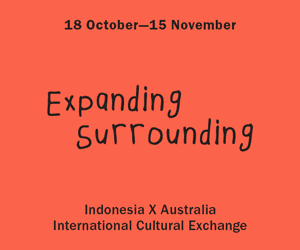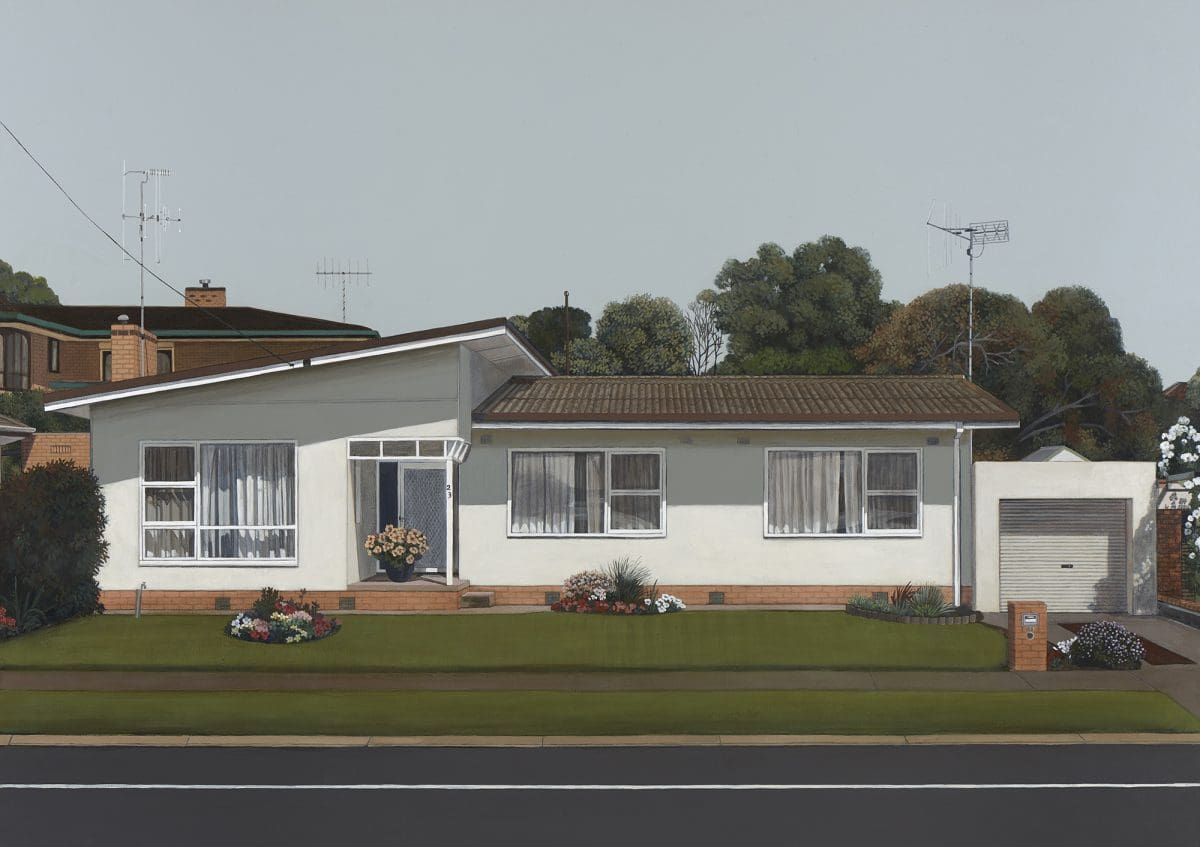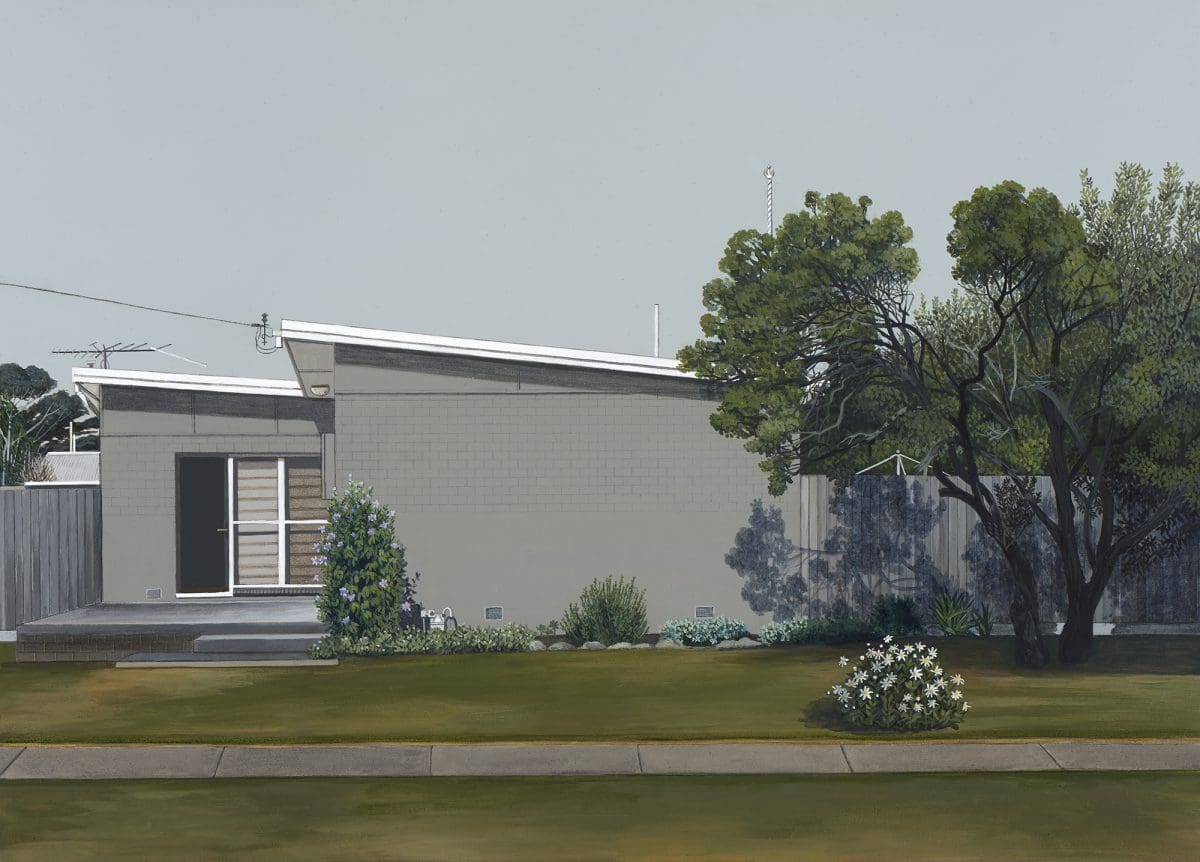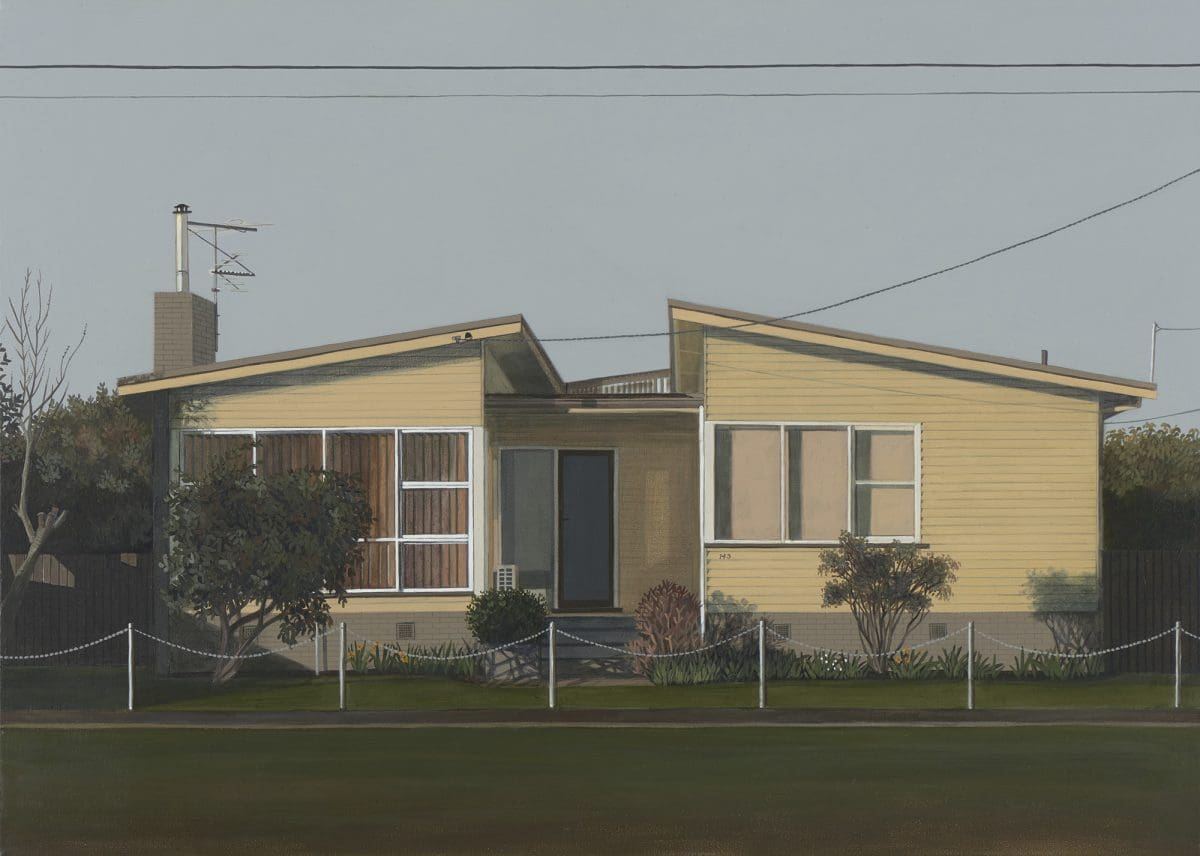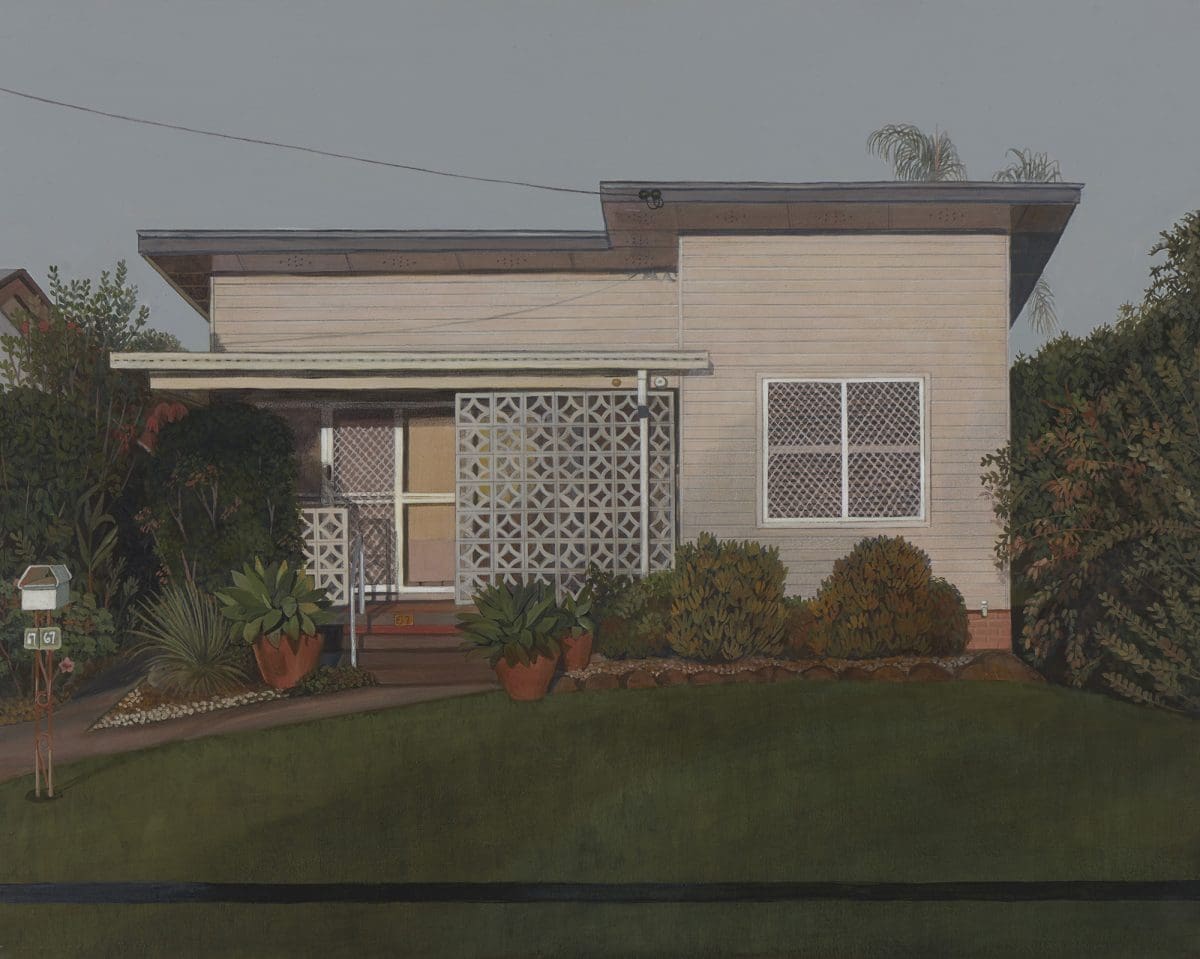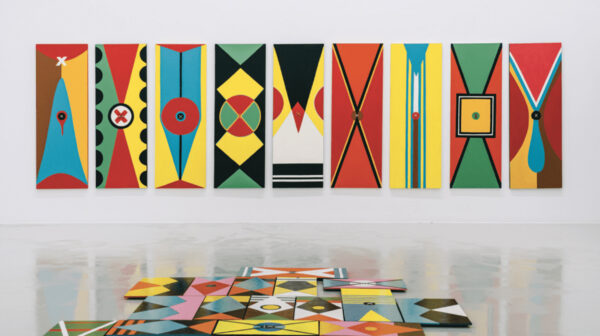On a wall in a corridor that leads to the maternity ward at Lismore Base Hospital in northern New South Wales there hangs one of Robyn Sweaney‘s mysterious, slightly sombre paintings of a ubiquitous kind of detached house. The artist herself describes the architectural style as ‘Australian vernacular’. Amid a surprisingly strong range of art that decorates the hospital walls, it is Sweaney’s enigmatic and reflective work (which conjures an ambiguous emotion that combines melancholy with a hint of nostalgia) that warrants particular pause.
This painting, Simply Irresistible, 2007, was created at a time when Sweaney’s interpretation of this suburban landscape was still in its infancy. Her first exhibition of paintings of houses inspired by those in Mullumbimby, her home of 30 years, occurred in 2006. Although the houses depicted in her latest show, Backwards looking forwards at Sydney’s Arthouse Gallery, may seem similar to those older works, the theories and concepts behind them have certainly evolved.
“In this new body of work my paintings focus on houses that were influenced by the trend of modernism that crept into the suburbs, mainly in the 1960s,” says Sweaney.
“This style of housing is best characterised by flat, angled or raked rooflines, floor-to-ceiling windows, easy interior flow and great indoor-outdoor connections that suited our climate and culture of the time.”
But there is more to Sweaney’s paintings than a fascination with the sculptural qualities of Australia’s familiar small-town dwellings. She regards them as homes rather than houses, and amid the feeling of calm and repose (or soporific suburban dullness depending on your point of view), one cannot help but be curious about the lives lived within.
“Homes and streetscapes can divulge more than their mere exteriors,” she says, “and function as repositories for identity. For us as viewers, they can convey a complex emotional response depending on our own experiences.”
“Outwardly, they are a familiar sight within the distinctly Australian landscape, yet they vary according to locale and their owners’ personalities.” Sweaney adds. “But I intentionally leave people out of my compositions. I don’t really want to know who lives there. I want to create my own narrative and sense of mystery and the openness for other people to create their own impression of who might live there.”
While the paintings do suggest certain familial dynamics behind the curtains, the fact remains that quietness is the dominant mood in Sweaney’s work.
In part, this comes from the strong influence of Jeffrey Smart. Yet unlike Smart, Sweaney decisively focuses on the domestic, and in doing so conjures ideas about childhood and an almost Proustian exploration of reconciling with the past.
“It’s about stillness, light, reflection and contemplation. There is definitely a little nostalgia but I don’t want my paintings to be sentimental,” she explains. “The title of the show, Backwards looking forwards, refers to how the past melds into our present experiences and affects how we view the landscape.”
It is not just human beings that Sweaney excludes from her paintings – she also chooses to eschew that other great signifier of emotional mood, skies. “I leave the skies out as they can dominate the landscape. I want the focus to be entirely on the house and its surrounds,” she says. “I aim to capture a moment in time that is fleeting yet at times dramatic in its calmness. Sometimes this can create a sense of unease for people, in that it can be slightly unnerving or foreboding.”
Backwards looking forwards
Robyn Sweaney
Arthouse Gallery
6 December – 12 January 2019
Closed 23 December – 7 January 2019


